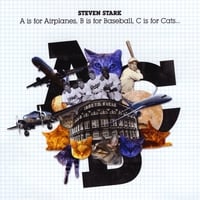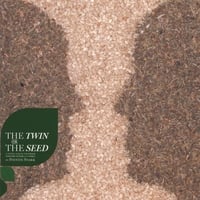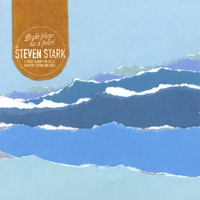This is a Christmas Mix that I made for my family this year. It consists of six works in the key of C - five by Haydn and one by Mozart. The following are notes for each track which include many time markings to point out specific points in each piece. I also list the specific recording artist and the length of each piece (to help insure that you find the correct version of each). I will also list a Spotify link to each recording.
Knowing information about a piece of music can take one's enjoyment to a new level. I hope that reading these notes, along with listening to the music, will help someone out there truly enjoy this great music!
Knowing information about a piece of music can take one's enjoyment to a new level. I hope that reading these notes, along with listening to the music, will help someone out there truly enjoy this great music!
Track One: Haydn’s Symphony No. 97 in C - 1st Mov. performed by Eugen Jochum and the London Philharmonic Orchestra 8:49
The first movement of a classical symphony is almost always in sonata-allegro form. Understanding this form and listening for it enhances one's enjoyment of the piece immensely, just as understanding the form of a sonnet help a reader appreciate a poem.
Here is a an outline of the form with a brief description of each section:
Introduction (optional) - Exposition (repeated) - Development - Recapitulation - Coda
Introduction - Haydn loved slow introductions. They often contained little foreshadowing figures of themes to come, but basically they seem to settle a listener in - like a prelude. Because of its contrast to the rest of the movement, the slow intro also gives the following allegro an added sense of momentum - an explosiveness of joy. Sometimes I think of them like Greek choruses, preparing the audience for what is to come. 11 of the 12 London symphonies have slow introductions at the beginning.
The Exposition contains the main thematic material of the movement. We hear Theme One right off the bat (after the intro) in a Haydn first movement. Theme One is in the main key of the piece. It is usually presented once or twice with some variation, and then a bridge of melodic development eventually takes us into a new key - in a classical symphony, the dominant (the key that is the fifth note up from the main key). Haydn often presents Theme One again in the new key - these works are often called "monothematic" and are quite common in Haydn's mature style. No. 94, the "Surprise" Symphony and No. 104, the "London" Symphony are good examples of monothematic expositions.
Just as often, however, a new melody (Theme Two) is presented in the new key. No. 97 is a good example of a symphony using two Themes (the second is lovely - a waltz-like melody). Most descriptions of sonata-allegro form will show "Theme One and Theme Two", but Haydn's use of the monothematic style shows us that for this developer of the form, key relationship was more important than a thematic difference.
And sometimes Haydn will do both! For instance in No. 100, the "Military" Symphony, we hear Theme One in the original key and in the dominant key, but then another theme is presented in the dominant key as well which figures heavily in the development - our next section.
But before we move on, I must mention that the Exposition in a classical symphony is repeated. This gives the audience a good chance to become familiar with the Themes. If you are learning to follow the form of a symphony, catching the repeat is one of the first things to try to do. Then try to identify the Themes.
The Development is where the composer leads us into the woods. It's the true explorative drama of the piece as the Themes are broken apart, played backwards, turned upside down, sent through a myriad of harmonic centers, and thrown around like a hot potato between the orchestral sections. Finally, after leading us away from home, the Development must lead us back again as it creates a focused tension which must resolve into...
The Recapitulation, which is the return of Theme One in the original key. There is usually no verbatim replaying of the Exposition. You will hear the same ideas, including the bridge materials most likely, but they may be treated a bit differently. And this time the bridge material will not lead us into the dominant key. We will stay in the main key for Theme Two as the piece establishes an overall harmonic resolution. We see again that key relationship is the main drama of classical sonata-allegro form.
The Coda is extra material at the end to add extra affirmation to the home key.
And there is a summary of sonata allegro from.
Now, using the London Philharmonic recording with Eugene Jochum conducting, I will give the specific time points where these different sections begin in Haydn's Symphony No. 97 in C Major.
Intro: 0:00 - this is a relatively short intro by Haydn' standards. It definitely features some foreshadowing of things to come!
Exposition/Theme One: 1:12 - so explosive!
Theme Two: 2:26 - so beautiful!
Exposition Repeat/ Theme One: 3:06
Theme Two: 4:20
Development: 4:59 - Can you pick out the different pieces of the themes he uses? He focuses mainly on Theme One, but there are some quicker violin passages which sound like the ascending short notes in Theme Two. There's probably many other references, including bridge material, that I have not found yet.
Recapitulation/Theme One: 6:10 - It doesn't take long to depart from the Exposition.
Theme Two: 7:07 - Ah, still beautiful!
Coda: 8:24 - It starts like Theme One, but quickly reinforces C Major to the end.
And there is another Haydn masterpiece. Nine minutes goes by pretty quickly when one knows the form and can admire Haydn's concise, clear execution.
Track Two: Haydn’s String Quartet No. 57 in C (Op. 74 No. 1) - 1st mvt. performed by the Endellion String Quartet 6:48
This is one of my favorite Haydn quartets. It is a high-flying tour-de-force of non-stop melodic inventiveness! It was on a tape I bought sometime in Junior High or High School. Then when I went to Interlochen in the summer of 1993, my string quartet coach selected this movement for us to work on all summer - to my great pleasure! Our excellent first violinist was from South Africa, and you can hear that he was busy when we played this!
After an opening chord, the Exposition is under way! It repeats at 1:45. The Development begins at 3:25. I particularly like the figure in octaves that occur at the 4:15 mark! The Recapitulation is at 4:48. And with Haydn (like Mozart and especially Beethoven), the Recap never really sees an end to the development of the material....
Track Three: Mozart’s String Quartet No. 19 in C “Dissonance” (K. 465) - 1st mvt. performed by the Emerson String Quartet 10:30
As a young adult Mozart became familiar with Haydn’s string quartets and was amazed by them. He began working on a set of six quartets which he dedicated to Haydn - they are known as the “Haydn” quartets. He spent three years working on them on and off again - which is amazing considering he often composed whole symphonies and operas in a matter of weeks.
Mozart's published dedication page (1 Sept. 1785):
“To my dear friend Haydn,
A father who had resolved to send his children out into the great world took it to be his duty to confide them to the protection and guidance of a very celebrated Man, especially when the latter by good fortune was at the same time his best Friend. Here they are then, O great Man and dearest Friend, these six children of mine. They are, it is true, the fruit of a long and laborious endeavor, yet the hope inspired in me by several Friends that it may be at least partly compensated encourages me, and I flatter myself that this offspring will serve to afford me solace one day.....”
This last of the six is known as the “Dissonance Quartet” because of the extraordinarily dissonant and tonally ambiguous opening of this movement. When it was published it is reported that several people asked for “corrected” scores!
Haydn initially wondered if there were mistakes in the opening of this movement but later wrote that “if Mozart wrote it, he must have meant it.”
And yet after the dissonant opening, the subsequent movement (the Exposition starts at 1:58) is as perfectly classical (yet incredibly intricate) as one could imagine. The Exposition repeats at 4:19. The Development begins at 6:38 and the Recapitulation is at 7:56 - beginning with yet another voicing of Theme I!
Haydn heard these quartets at a private performance, with Mozart playing in the quartet (sometimes Haydn played quartets with Mozart as well, he on violin and Mozart on viola). Afterwards, Leopold Mozart wrote in a letter to his daughter Nannerl, Mozart’s sister, that Haydn spoke to him after the concert saying, “Before God, and as an honest man, I tell you that your son is the greatest composer known to me either in person or by name. He has taste, and, what is more, the most profound knowledge of composition.”
Given Haydn’s musical brilliance and gracious, generous nature - and the mutual respect and affection between he and Mozart - this comment seems likely to be historically accurate.
Track Four: Haydn’s String Quartet No. 72 in C “Emperor” (Op. 76 No. 3) - 2nd mvt. performed by the Emerson String Quartet 6:34
When Haydn was in England, he really enjoyed their national anthem - “God Save The King”. He wanted to compose a memorable hymn that could serve that purpose for his country, and he definitely pulled it off with the “Emperor’s Hymn.” It quickly became Austria’s first national anthem and today is the national anthem of Germany. Haydn wrote this quartet movement using the “Emperor’s Hymn” as the basis for a theme and variations. The melody is presented five times - once by each instrument in the quartet, and then again by the first violin at the end. Right after the five minute mark, the first violin shifts the melody up an octave.
At 5:20, the cello begins holding a long, sustained D. At around 5:35, the tension releases as the cello makes an upward run leading to the climax of the melody and of the piece - which sounds like a glimpse into the dimension of heaven.
Track Five: Haydn’s Sym. No. 90 in C - 1st movement performed by Adam Fischer & Austro-Hungarian Haydn Orchestra 7:26
I play this symphony for the boys all the time in the living room - especially in the morning!
The slow introduction gives us a glimpse of Theme I, which is introduced properly at the 1:00 mark when the movement “kicks in”. Theme II enters at 1:42. Theme I reappears at the end of the Exposition. The repeat occurs at 2:43 or so. The Development starts at around 4:26 or so and makes great use of both themes. One reason I like this symphony so well is because the themes are so easily identifiable, and the repeating first note of Theme I makes it easy to listen for in the development. Theme II has a distinctive arpeggio feel which also makes it fairly easy to listen for.
The Recapitulation begins at 5:39.
Track Six: Haydn’s Sym. No. 95 in C Min - 4th mvt. performed by the Royal Concertgebouw Orchestra & Sir Colin Davis 3:43
This is the final movement to this work. The contrapuntal writing is fantastic! And yet it is so melodic at the same time.



No comments:
Post a Comment